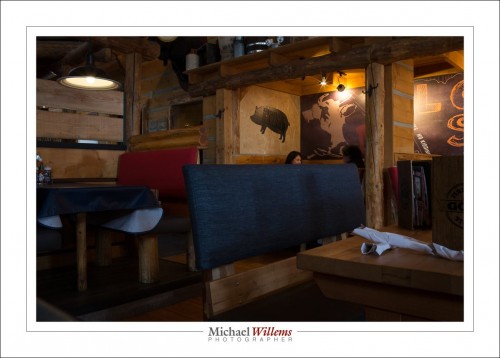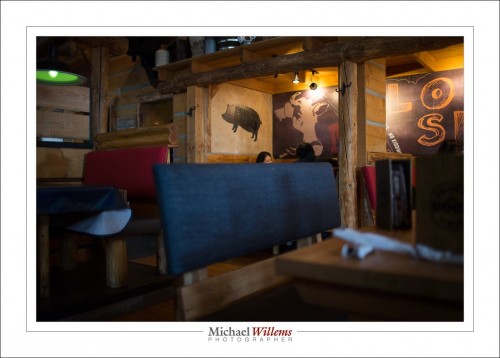Theories are best tested. Like the theory of exposure. Which, as it turns out, actually works. Let me show you.
Think: You are filling a bucket. Your aperture is like a faucet. Your shutter speed is “how long do you told the bucket under the tap”. Together, the time and the stream of water fill the bucket.
So here’s f/22 at 1/4 second. A triple of water, so filling the bucket is a slow process:
That should be equivalent to:
- f/16 at 1/8. We open the faucet, but reduce the time.
- f/11 at 1/15. We open the faucet more, but reduce the time more as well.
- f/8 at 1/30… and so on:
- f/5.6 at 1/60
- f/4 at 1/125
- f/2.8 at 1/250
- f/2 at 1/500
- f/1.4 at 1/1000
And indeed it is. Here’s f/1.4 at 1/1000:
You should be trying this stuff, not just reading this. We lean by doing. Muscle memory!
Bonus points:
How do I know the first one is f/22? Look at the star from the lamp top right. Star means small aperture (high f-number).
Why is the other lamp green in the fast shutter picture? Because it is a fluorescent light. It goes on and off, and changes colour, 60 times a second or more. A fast shutter speed will catch that. Your shots are all going to be a different colour/brightness.
Tip: Get my books at http://learning.photography. Amazing books which will have you actually understanding your camera and what to do with it, in record time.



Michael,
Nice showing of slow to fast. For the starburst on the light at the slow speed, is that something that has to do with the shape of the leaf shutter, or did you have a starburst filter on? Or something else? Thanks!
It’s the optics. A small aperture and indeed the shape of the leaf diaphragm.